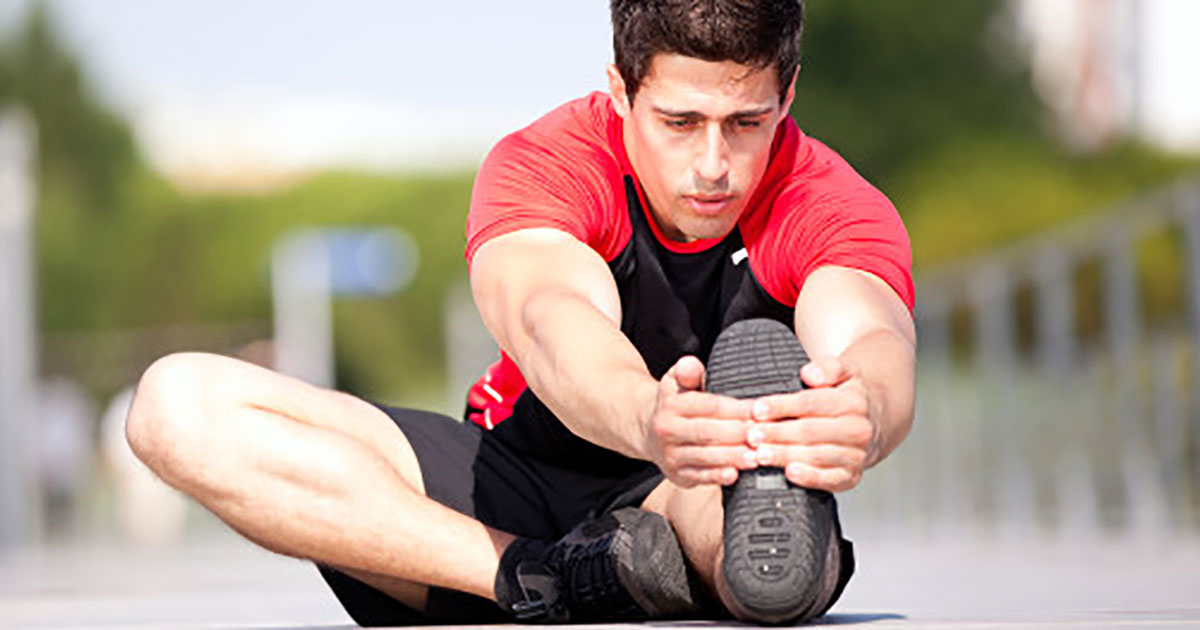Iliotibial Band (IT Band) Syndrome is second most common injury in endurance sports making up almost 10% of all reported injuries. As endurance athletes we can’t look around without finding an athlete who has not experienced IT Band Syndrome, and in many cases, just by looking in the mirror.
IT Band Syndrome is avoidable. Through simple exercises, you can learn to train hard without ever having to deal with this injury. To understand how these exercises will keep you healthy, you first have to understand what the IT Band syndrome is.
The IT band is a long band of tissue that runs from the hip abductors located at the top of your hips (a.k.a., your butt) down the outside of your upper leg to the top of your lower leg. Its main function is to act as a stabilizer/shock absorber for the hip joint. The most common symptom of IT Band syndrome is a very sharp pain or clicking on the lateral side of your knee during any activity when the knee is flexed. It is an over-use injury most often brought on by adding volume or intensity to your training at a rate to which the supporting muscles of your IT Band cannot adapt. As you exercise, if the muscles that comprise the hip abductors are weak or imbalanced, they will begin to fatigue and other muscles will subsequently compensate resulting in poor mechanics, and cause inflammation of the IT Band.
The single most important factor in avoiding IT Band Syndrome injury is to develop your hip abductor strength.
These 4 exercises should be in every athlete’s repertoire to prevent IT Band Syndrome. They take very little time to do—only 15 minutes, 3-4 x/week—making them easy to fit into any workout routine.
- Double/Double-Lift (Use an exercise strap or belt, and couch pillow)
The Exercise: Lie on your back with your knees bent and your arms relaxed out to the sides, and palms up. Your ankles, knees, hips and shoulders should be in alignment. Place the strap around your knees so they can go no more than hip width apart. Place a pillow between your feet/ankles. Simultaneously pull your knees out against the strap as you squeeze the pillow with your feet. Lift and lower your feet about 2 to 3 inches off the floor per repetition. To get the best results, aim for 3 sets of 20 reps.
Why Do It: This exercise isolates and strengthens the Glutes and forces you to use each side of your hips evenly. Your Glutes are the largest muscle group connected directly to the IT Band.
- Double Switch – Lift (Use an exercise strap or belt, and a couch pillow)
The Exercise: Lie on your back with your knees bent and your arms relaxed out to the sides, and palms up. Ankles, knees, hips and shoulders should be in alignment. Place a pillow between your knees. Place a strap around your ankles so they can go no more than hip width apart. (The is the opposite placement of the pillow and strap from Exercise 1.) Simultaneously squeeze the pillow between your knees while pulling your ankles/feet outward against the strap. Lift and lower your feet about 2 to 3 from the floor. Just like with the Double/Double, aim for 3 sets of 20 reps.
Why Do It: If you’re thinking that this exercise sounds very similar to the first, you’re right. The two exercises complement each other, and work opposing muscle groups. The Double Switch isolates and strengthens the hip flexors while forcing you to use each side evenly.
(Thanks for help on these exercises to Michael Bellofatto, Egoscue Senior Therapist and Master Instructor.)
- Hip Bridges
The Exercise: Lie on your back with your knees bent and your feet, hips and shoulders in line with each other. Keep your arms out at a 45 degree angle, with your palms up. Lift your hips off the floor as high as you can and slowly lower them back down. To maintain better alignment, I recommend placing a pillow or volleyball between your knees with light pressure on it while performing each rep. Aim for 2-3 sets of 15-20 reps.
Why Do It: Hip Brides strengthen your Glutes while decreasing the tightness in your hip flexors through a range of motion at your hip joint that is almost universal in endurance sports.
- 3 Way Leg Raises (With Resistance Band)
The Exercise: Start from a standing position (you might use a wall for balancing if just starting to perform this exercise) with the resistance band placed around both legs just above the knee. Bend both knees slightly, and lift your left foot off the ground with the knee bent to 90 degrees. In a controlled and slow motion, lift your left leg forward until the thigh is parallel to the ground. Slowly returning to the middle. Without placing your left foot on the floor, slowly move the left leg out to the side. Slowly return to the middle. Finally, slowly extend the left leg behind you. Again, slowly returning the middle. This is one rep. For the best result, aim for 2-3 reps of 5, and repeat the same motion on your right side. You may find that you need to start without the resistance band the first few times that you do this exercise.
Why Do It: Life is not linear. We move in 3 dimensions. This exercise brings all the hip abductor muscles together and moves them through a large range of motion.
This series of exercises can be done anywhere as part of your next workout, or while you’re watching your favorite tv show (you’ll be finished before American Idol is over). Each exercise uses accessories that you likely already have around your house. Most importantly, these exercises will keep your IT Band happy and healthy ensuring that you’ll stay on track for your next finish line!



